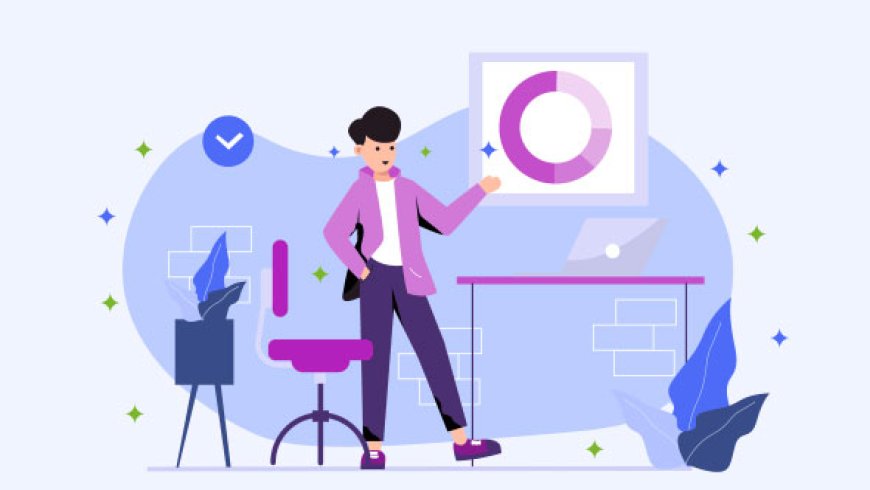Breaking Down Silo Walls: The Power of a Multidisciplinary Approach in Corporate Learning
Discover the power of a multidisciplinary approach in corporate learning. Learn how breaking down silos can boost employee competencies, foster innovation, and strengthen cross-departmental collaboration.

Dear EdTech Türkiye readers and esteemed business professionals,
We all know the typical corporate scene:
Marketing is over in one corner, IT tucked away in another, and Finance immersed in its own world.
Departments, while mastering their own specialties, sometimes end up building invisible walls—walls that hinder collaboration, innovation, and a holistic view of the organization.
But what if we broke down those walls?
What if we wove together the threads of knowledge and skills from different departments, roles, and disciplines to create a stronger, more agile, and more innovative organization?
Today, we’re exploring the transformative power of a multidisciplinary approach in corporate Learning and Development (L&D).
What Is a Multidisciplinary Approach—and Why Does It Matter for Organizations?
At its core, a multidisciplinary learning strategy empowers employees to go beyond their immediate expertise, drawing on the knowledge and skills of various functions and disciplines.
Think about it:
-
An engineer enhancing their presentation skills.
-
A marketer gaining basic data analysis knowledge.
-
A sales team deepening their understanding of product development processes.
This approach not only boosts individual competencies but also strengthens cross-functional understanding and collaboration.
In today’s VUCA world (Volatile, Uncertain, Complex, Ambiguous), solving complex business challenges is no longer a one-department job.
Success demands cross-functional thinking—and action.
How Does This Approach Benefit Employees, Teams, and the Organization?
Sharper Problem-Solving and Innovation Muscles
Teams that blend different perspectives produce more creative and effective solutions.
The synergy created when a finance expert, an R&D engineer, and a marketer collaborate on a project is far greater than what any single department could achieve alone.
It’s not just about solving problems—it's about seeing opportunities before anyone else.
Greater Agility and Adaptability
The business landscape is in constant flux.
Employees with multidisciplinary skills adapt faster to change, move between roles more easily, and boost overall organizational agility.
In a world of uncertainty, building a resilient organization means investing in versatile talent.
Stronger Cross-Departmental Collaboration
One of the biggest advantages: it breaks down silos.
As employees understand each other’s workflows, challenges, and goals, empathy and communication naturally improve.
The "us vs. them" mentality fades, replaced by unified teams focused on shared objectives.
The results?
Faster project completion, fewer conflicts, and better outcomes.
Higher Employee Engagement and Motivation
Employees who feel they are continuously learning and using a diverse set of skills become more engaged in their work.
Multidisciplinary projects and training opportunities break the monotony, give employees a broader sense of impact, and foster a deeper sense of belonging.
A Holistic Perspective and Strategic Thinking
When employees look beyond their job descriptions and understand how different functions interconnect, they see the bigger picture.
They make smarter, more strategic decisions—better aligned with the company's overall goals.
Fantastic! But How Do We Bring It to Life in Our Organizations?
Integrating this approach into your corporate culture and L&D strategy requires deliberate actions:
Align with Strategic Goals
Link multidisciplinary learning programs to organizational business objectives.
Start with a needs analysis:
-
Which competencies are critical?
-
Where is cross-departmental collaboration lacking?
Design Integrated Learning Experiences
Instead of isolated, single-topic courses, design blended programs, workshops, or case studies combining multiple skill sets.
(Example: Add finance literacy or digital transformation modules to leadership development programs.)
Encourage Cross-Functional Teams and Projects
Create opportunities for employees from different departments to work together on shared projects.
Innovation camps, project-based assignments, or rotation programs are powerful ways to build this mindset.
Foster a Knowledge-Sharing Culture
Organize activities and platforms that promote knowledge exchange across departments:
-
Internal mentorship programs
-
“Lunch & Learn” sessions
-
Expertise-sharing meetings
-
Corporate knowledge banks or wikis
Use Technology as a Bridge
Learning Management Systems (LMS), collaboration tools (Slack, Teams, etc.), VR simulations, and cross-disciplinary online courses make it easy for employees to learn and collaborate anytime, anywhere.
Offer Flexible and Personalized Learning Paths
Allow employees to choose learning modules or projects across disciplines based on their career aspirations and company needs.
Final Thoughts: Not Just a Trend—A Strategic Imperative
Dear learning and development professionals, managers, and all lifelong learners:
Multidisciplinary learning is not just a passing trend.
It’s a strategic investment to make our organizations more resilient, innovative, and collaborative.
Embracing this approach means unlocking the full potential of our employees—and building companies truly ready for the future.
Breaking down silos, seeing differences as strengths, and believing in the power of learning together—this is the true key to success.
Let’s expand the boundaries of learning within our organizations—and create a more connected future, together.
If you would like to learn more about this topic or request a custom-designed learning program for your organization, feel free to contact us. Our professional team would be delighted to provide tailored solutions based on your needs.
All content on this website is protected by copyright laws. Unauthorized copying, distribution, or reproduction in any form is prohibited. All rights reserved, and prior written permission is required for any use.